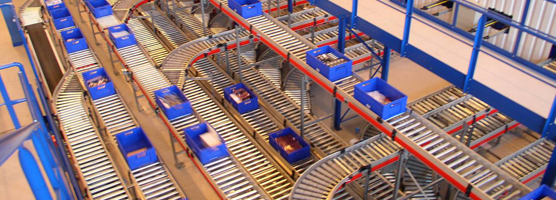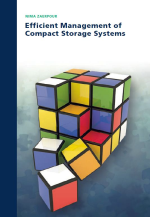Research themes

1. Order picking
Order picking has long been identified as the most labor-intensive and costly activity for almost every warehouse; the cost of order picking is estimated to be as much as 55% of the total warehouse operating expense. Any underperformance in order picking can lead to unsatisfactory service and high operational cost for the warehouse, and consequently for the whole supply chain. In order to operate efficiently, the order-picking process needs to be robustly designed and optimally controlled. The research in this area has grown rapidly in the past decades. In our research we focus on analyzing optimal (internal) layout design, storage assignment methods, routing methods, order batching and release, and zoning. In addition, new order-picking system developments in practice lead to promising new research directions.
2. High-density storage systems
High-density storage systems (compact, multi-deep automated storage and retrieval systems) are becoming increasingly popular for storing products. High-density storage systems are used to store containers at a yard, frozen products, or cars in automated garages. They consist of combinations of multi-deep racks, conveyors, lifts, or cranes, which can move independently, thereby realizing a large throughput at a small footprint. We study performance and design of such systems, for different configurations of material handling systems and layouts, and different storage and retrieval policies. New systems, such as the 3D version of Sam Lloyd’s sliding puzzle where horizontal movements are carried out by multiple shuttles and the vertical movement by a lift, are particularly challenging.
3. Container terminal operations
At container terminals, containers are transshipped from one mode of transportation to another. Within a terminal different types of material handling equipment are used to transship containers from ships to barges, trucks and trains and vice versa. Over the past decades, ships have strongly increased in size, up to 13,000 TEU (Twenty feet equivalent unit container). In order to handle these big ships efficiently, the docking time at the port must be as brief as possible. This means that large amounts of containers have to be loaded, unloaded and transshipped in a short time span, with a minimum use of expensive equipment. We study layout design, stacking, retrieval, and transport policies for container yards of different size and with different material handling systems.
4. Human factors in operations
Both in practice and academics, there is a tendency not to take human factors into account when searching for new ways to optimize operations. However, humans are often at the heart of crucial processes such as order picking. We study the interaction between systems and humans and the impact on performance. We are particularly interested in how to create the right environment for humans to perform at their best abilities. Past research projects include: order-picking system selection, increasing safety and working climate on the shop floor, including human factors in storage slotting decisions, and using goal-setting to increase order-picking performance.


